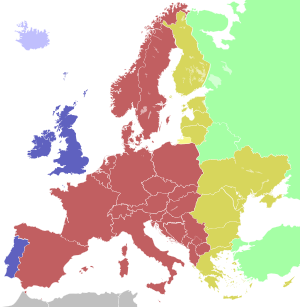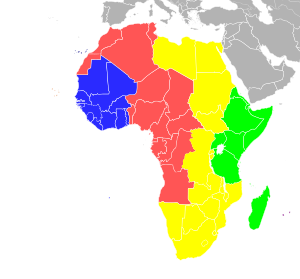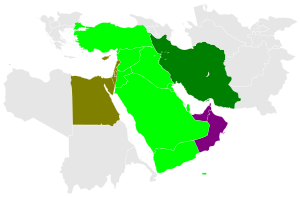UTC+03:00 : Kalainan tali sa mga rebisyon
m Bot fixing articles |
m Bot fixing articles |
||
| Linya 99: | Linya 99: | ||
[[Kategoriya:Mga sona sa panahon]] |
[[Kategoriya:Mga sona sa panahon]] |
||
[[en:UTC+03:00]] |
|||
[[en:UTC+03:00]] |
[[en:UTC+03:00]] |
||
[[en:UTC+03:00]] |
[[en:UTC+03:00]] |
||
Rebisyon niadtong 11:17, 4 Enero 2017

| |||||||||||||||||||||||||||||||||||||||||||||||||||||||||||||||||||||||||||||||||||||||||||||||||||||||||||||||||||||||||||||||||||||||||||||||||||||||||||||||||||||||||||||||||||||||||||||||||||||||||||||||||||||||||||||||||||||||||||||||||||||||||||||||||||||||||||||||||||||||||||||||||||||||||||||||||||||||||||||||||||||||||||||||||||||||||||||||||||||||||||||||||||||||||||||||||||||||||||||||||||||||||||||||||||||||||||||||||||||||||||||||||||||||||||||||||||||||||||||||||||||||||||||||||||||||||||||||||||||||||||||||||||||||||||||||||||||||||||||||||||||||||||||||||||||||||||||||||||||||||||||||||||||||||||||||||||||||||||||||||||||||||||||||||||||||||||||||||||||||||||||||||||||||||||||||||||||||||||||||||||||||||||||||||||||||||||||||||||||||||||||||||||||||||||||||||||||
| Meridians | |||||||||||||||||||||||||||||||||||||||||||||||||||||||||||||||||||||||||||||||||||||||||||||||||||||||||||||||||||||||||||||||||||||||||||||||||||||||||||||||||||||||||||||||||||||||||||||||||||||||||||||||||||||||||||||||||||||||||||||||||||||||||||||||||||||||||||||||||||||||||||||||||||||||||||||||||||||||||||||||||||||||||||||||||||||||||||||||||||||||||||||||||||||||||||||||||||||||||||||||||||||||||||||||||||||||||||||||||||||||||||||||||||||||||||||||||||||||||||||||||||||||||||||||||||||||||||||||||||||||||||||||||||||||||||||||||||||||||||||||||||||||||||||||||||||||||||||||||||||||||||||||||||||||||||||||||||||||||||||||||||||||||||||||||||||||||||||||||||||||||||||||||||||||||||||||||||||||||||||||||||||||||||||||||||||||||||||||||||||||||||||||||||||||||||||||||||||
|---|---|---|---|---|---|---|---|---|---|---|---|---|---|---|---|---|---|---|---|---|---|---|---|---|---|---|---|---|---|---|---|---|---|---|---|---|---|---|---|---|---|---|---|---|---|---|---|---|---|---|---|---|---|---|---|---|---|---|---|---|---|---|---|---|---|---|---|---|---|---|---|---|---|---|---|---|---|---|---|---|---|---|---|---|---|---|---|---|---|---|---|---|---|---|---|---|---|---|---|---|---|---|---|---|---|---|---|---|---|---|---|---|---|---|---|---|---|---|---|---|---|---|---|---|---|---|---|---|---|---|---|---|---|---|---|---|---|---|---|---|---|---|---|---|---|---|---|---|---|---|---|---|---|---|---|---|---|---|---|---|---|---|---|---|---|---|---|---|---|---|---|---|---|---|---|---|---|---|---|---|---|---|---|---|---|---|---|---|---|---|---|---|---|---|---|---|---|---|---|---|---|---|---|---|---|---|---|---|---|---|---|---|---|---|---|---|---|---|---|---|---|---|---|---|---|---|---|---|---|---|---|---|---|---|---|---|---|---|---|---|---|---|---|---|---|---|---|---|---|---|---|---|---|---|---|---|---|---|---|---|---|---|---|---|---|---|---|---|---|---|---|---|---|---|---|---|---|---|---|---|---|---|---|---|---|---|---|---|---|---|---|---|---|---|---|---|---|---|---|---|---|---|---|---|---|---|---|---|---|---|---|---|---|---|---|---|---|---|---|---|---|---|---|---|---|---|---|---|---|---|---|---|---|---|---|---|---|---|---|---|---|---|---|---|---|---|---|---|---|---|---|---|---|---|---|---|---|---|---|---|---|---|---|---|---|---|---|---|---|---|---|---|---|---|---|---|---|---|---|---|---|---|---|---|---|---|---|---|---|---|---|---|---|---|---|---|---|---|---|---|---|---|---|---|---|---|---|---|---|---|---|---|---|---|---|---|---|---|---|---|---|---|---|---|---|---|---|---|---|---|---|---|---|---|---|---|---|---|---|---|---|---|---|---|---|---|---|---|---|---|---|---|---|---|---|---|---|---|---|---|---|---|---|---|---|---|---|---|---|---|---|---|---|---|---|---|---|---|---|---|---|---|---|---|---|---|---|---|---|---|---|---|---|---|---|---|---|---|---|---|---|---|---|---|---|---|---|---|---|---|---|---|---|---|---|---|---|---|---|---|---|---|---|---|---|---|---|---|---|---|---|---|---|---|---|---|---|---|---|---|---|---|---|---|---|---|---|---|---|---|---|---|---|---|---|---|---|---|---|---|---|---|---|---|---|---|---|---|---|---|---|---|---|---|---|---|---|---|---|---|---|---|---|---|---|---|---|---|---|---|---|---|---|---|---|---|---|---|---|---|---|---|---|---|---|---|---|---|---|---|---|---|---|---|---|---|---|---|---|---|---|---|---|---|---|---|---|---|---|---|---|---|---|---|---|---|---|---|---|---|---|---|---|---|---|---|---|---|---|---|---|---|---|---|---|---|---|---|---|---|---|---|---|---|---|---|---|---|---|---|---|---|---|---|---|---|---|---|---|---|---|---|---|---|---|---|---|---|---|---|---|---|---|---|---|---|---|---|---|---|---|---|---|---|---|---|---|---|---|---|---|---|---|---|---|---|---|---|---|---|---|---|---|---|---|---|---|---|---|---|---|---|---|---|---|---|---|---|---|---|---|---|---|---|---|---|---|---|---|---|---|---|---|---|---|---|---|---|---|---|---|---|---|---|---|---|---|---|---|---|---|---|---|---|---|---|---|---|---|---|---|---|---|---|---|---|---|---|---|
| Central | 45 degrees E | ||||||||||||||||||||||||||||||||||||||||||||||||||||||||||||||||||||||||||||||||||||||||||||||||||||||||||||||||||||||||||||||||||||||||||||||||||||||||||||||||||||||||||||||||||||||||||||||||||||||||||||||||||||||||||||||||||||||||||||||||||||||||||||||||||||||||||||||||||||||||||||||||||||||||||||||||||||||||||||||||||||||||||||||||||||||||||||||||||||||||||||||||||||||||||||||||||||||||||||||||||||||||||||||||||||||||||||||||||||||||||||||||||||||||||||||||||||||||||||||||||||||||||||||||||||||||||||||||||||||||||||||||||||||||||||||||||||||||||||||||||||||||||||||||||||||||||||||||||||||||||||||||||||||||||||||||||||||||||||||||||||||||||||||||||||||||||||||||||||||||||||||||||||||||||||||||||||||||||||||||||||||||||||||||||||||||||||||||||||||||||||||||||||||||||||||||||||
| Western border (nautical) | 37.5 degrees E | ||||||||||||||||||||||||||||||||||||||||||||||||||||||||||||||||||||||||||||||||||||||||||||||||||||||||||||||||||||||||||||||||||||||||||||||||||||||||||||||||||||||||||||||||||||||||||||||||||||||||||||||||||||||||||||||||||||||||||||||||||||||||||||||||||||||||||||||||||||||||||||||||||||||||||||||||||||||||||||||||||||||||||||||||||||||||||||||||||||||||||||||||||||||||||||||||||||||||||||||||||||||||||||||||||||||||||||||||||||||||||||||||||||||||||||||||||||||||||||||||||||||||||||||||||||||||||||||||||||||||||||||||||||||||||||||||||||||||||||||||||||||||||||||||||||||||||||||||||||||||||||||||||||||||||||||||||||||||||||||||||||||||||||||||||||||||||||||||||||||||||||||||||||||||||||||||||||||||||||||||||||||||||||||||||||||||||||||||||||||||||||||||||||||||||||||||||||
| Eastern border (nautical) | 52.5 degrees E | ||||||||||||||||||||||||||||||||||||||||||||||||||||||||||||||||||||||||||||||||||||||||||||||||||||||||||||||||||||||||||||||||||||||||||||||||||||||||||||||||||||||||||||||||||||||||||||||||||||||||||||||||||||||||||||||||||||||||||||||||||||||||||||||||||||||||||||||||||||||||||||||||||||||||||||||||||||||||||||||||||||||||||||||||||||||||||||||||||||||||||||||||||||||||||||||||||||||||||||||||||||||||||||||||||||||||||||||||||||||||||||||||||||||||||||||||||||||||||||||||||||||||||||||||||||||||||||||||||||||||||||||||||||||||||||||||||||||||||||||||||||||||||||||||||||||||||||||||||||||||||||||||||||||||||||||||||||||||||||||||||||||||||||||||||||||||||||||||||||||||||||||||||||||||||||||||||||||||||||||||||||||||||||||||||||||||||||||||||||||||||||||||||||||||||||||||||||
| Other | |||||||||||||||||||||||||||||||||||||||||||||||||||||||||||||||||||||||||||||||||||||||||||||||||||||||||||||||||||||||||||||||||||||||||||||||||||||||||||||||||||||||||||||||||||||||||||||||||||||||||||||||||||||||||||||||||||||||||||||||||||||||||||||||||||||||||||||||||||||||||||||||||||||||||||||||||||||||||||||||||||||||||||||||||||||||||||||||||||||||||||||||||||||||||||||||||||||||||||||||||||||||||||||||||||||||||||||||||||||||||||||||||||||||||||||||||||||||||||||||||||||||||||||||||||||||||||||||||||||||||||||||||||||||||||||||||||||||||||||||||||||||||||||||||||||||||||||||||||||||||||||||||||||||||||||||||||||||||||||||||||||||||||||||||||||||||||||||||||||||||||||||||||||||||||||||||||||||||||||||||||||||||||||||||||||||||||||||||||||||||||||||||||||||||||||||||||||
| Date-time group (DTG) | C | ||||||||||||||||||||||||||||||||||||||||||||||||||||||||||||||||||||||||||||||||||||||||||||||||||||||||||||||||||||||||||||||||||||||||||||||||||||||||||||||||||||||||||||||||||||||||||||||||||||||||||||||||||||||||||||||||||||||||||||||||||||||||||||||||||||||||||||||||||||||||||||||||||||||||||||||||||||||||||||||||||||||||||||||||||||||||||||||||||||||||||||||||||||||||||||||||||||||||||||||||||||||||||||||||||||||||||||||||||||||||||||||||||||||||||||||||||||||||||||||||||||||||||||||||||||||||||||||||||||||||||||||||||||||||||||||||||||||||||||||||||||||||||||||||||||||||||||||||||||||||||||||||||||||||||||||||||||||||||||||||||||||||||||||||||||||||||||||||||||||||||||||||||||||||||||||||||||||||||||||||||||||||||||||||||||||||||||||||||||||||||||||||||||||||||||||||||||
| External links | |||||||||||||||||||||||||||||||||||||||||||||||||||||||||||||||||||||||||||||||||||||||||||||||||||||||||||||||||||||||||||||||||||||||||||||||||||||||||||||||||||||||||||||||||||||||||||||||||||||||||||||||||||||||||||||||||||||||||||||||||||||||||||||||||||||||||||||||||||||||||||||||||||||||||||||||||||||||||||||||||||||||||||||||||||||||||||||||||||||||||||||||||||||||||||||||||||||||||||||||||||||||||||||||||||||||||||||||||||||||||||||||||||||||||||||||||||||||||||||||||||||||||||||||||||||||||||||||||||||||||||||||||||||||||||||||||||||||||||||||||||||||||||||||||||||||||||||||||||||||||||||||||||||||||||||||||||||||||||||||||||||||||||||||||||||||||||||||||||||||||||||||||||||||||||||||||||||||||||||||||||||||||||||||||||||||||||||||||||||||||||||||||||||||||||||||||||||


| Kahayag nga asul | Takna sa Kasadpang Uropa / Greenwich Mean Time (UTC) |
| Asul | Takna sa Kasadpang Uropa / Greenwich Mean Time (UTC) Takna sa Ting-init sa Kasadpang Uropa (UTC+1) |
| Pula | Takna sa Sentral Uropa (UTC+1) Takna sa Ting-init sa Sentral Uropa (UTC+2) |
| Dilaw | Takna sa Sidlakang Uropa / Takna sa Kaliningrad (UTC+2) |
| Bulawan | Takna sa Sidlakang Uropa (UTC+2) Takna sa Ting-init sa Sidlakang Uropa (UTC+3) |
| Kahayag nga berde | Dugang nga Takna sa Sidlakang Uropa (UTC+3) |

Light colors indicate where standard time is observed all year; dark colors indicate where daylight savings is observed.
Note: The islands of Cape Verde are to the west of the African mainland.

▉▉▉▉ Ang sukaranang takna gibantayan sa tibuok tuig
▉ Gibantayan ang Taknang light saving

| USZ1 | Kaliningrad Time | UTC+2 | (MSK–1) | |
| MSK | Moscow Time | UTC+3 | (MSK±0) | |
| SAMT | Samara Time | UTC+4 | (MSK+1) | |
| YEKT | Yekaterinburg Time | UTC+5 | (MSK+2) | |
| OMST | Omsk Time | UTC+6 | (MSK+3) | |
| KRAT | Krasnoyarsk Time | UTC+7 | (MSK+4) | |
| IRKT | Irkutsk Time | UTC+8 | (MSK+5) | |
| YAKT | Yakutsk Time | UTC+9 | (MSK+6) | |
| VLAT | Vladivostok Time | UTC+10 | (MSK+7) | |
| MAGT | Magadan Time | UTC+11 | (MSK+8) | |
| PETT | Kamchatka Time | UTC+12 | (MSK+9) |
UTC+03:00 mao ang usa ka panahon offset nga midugang +03. In areas using this time offset, the time is three hours later than the Coordinated Universal Time (UTC). Following the ISO 8601 standard, a time with this offset would be written as, for example, 2024-04-18T05:34:22+03:00 (boldface only here to be clear).
Some areas in the world use UTC+03:00 all year, other areas only part of the year.
Ingon sa sumbanan nga panahon (bug-os nga tuig)
Uropa
Most of European Russia, including Moscow, St. Petersburg, Rostov on Don, Novaya Zemlya, Franz Josef Land. From October 26, 2014 Moscow and most other parts of European Russia started using UTC+3 again, all year around. [1]
Besides the names mentioned above, the name 'Eastern Europe Forward Time' (EEFT) is sometimes used.
 Belarus
Belarus Russia - Moscow Time
Russia - Moscow Time- all railroad time in Russia, including railroad in Kaliningrad Oblast.
 Turkey - beginning from October 2016
Turkey - beginning from October 2016- Turkish Republic of Northern Cyprus - beginning from October 2016
Africa
 Comoros
Comoros Djibouti
Djibouti Eritrea
Eritrea Ethiopia
Ethiopia Kenya
Kenya Madagascar
Madagascar- Mayotte (France) and Scattered Islands in the Indian Ocean (Bassas da India, Europa Island, Juan de Nova Island)
 Somalia
Somalia South Sudan
South Sudan Sudan
Sudan Tanzania
Tanzania Uganda
Uganda
Asya
Arabia Standard Time
Arabia Standard Time, or AST, is used by some countries in the Middle East. As this time zone is predominantly in the equatorial region, there is no significant change in day length throughout the year, so daylight saving time is not observed. Between 1982 and 2007, Iraq observed Arabia Daylight Time (UTC+4) but the government abolished DST on March 2008.
Arabia Standard Time is used by the following countries:[2] [3]
Notes:
- The westernmost point at which UTC+03 with no DST is applied is the westernmost point of Sudan, in the West Darfur state, at the border with Chad; Geneina, the capital of West Darfur, located very close to that point, has a longitude of 22°27' E.
- The easternmost point at which UTC+03 with no DST is applied is actually the easternmost point of Saudi Arabia, in the Eastern Province, at the border with Oman, with a longitude of roughly 55°20' E.
Ingon sa kahayag sa adlaw sa pagluwas sa panahon (sa amihanan nga bahin sa kalibutan sa ting-init lang)
Europe
Western Asia
Tan-awa usab
- Panahon sa Russia
- Moscow Time
- Panahon sa Turkey
- Panahon sa Ethiopia
- Panahon sa Antarctica – some stations use this time zone
Notes
- The westernmost point at which UTC+03 with DST is applied is actually the westernmost point of contiguous Russia, near Lavry, Pskov Oblast (27°19' E). During the summer the time employed there (corresponding to 60°E) is 33°41' E of physical time, i.e. roughly 2 hours and 14 minutes ahead of physical time, making for the largest discrepancy between time used and physical time for UTC+3 with DST. This actually the largest discrepancy overall for UTC+03 even if UTC+03 with no DST is included.
- The easternmost point at which UTC+03 with DST is applied is Cape Zhelaniya, Severny Island, Novaya Zemlya, Russia (69°06' E). During the winter the time employed there (corresponding to 45°E) is 24°06' W of physical time, i.e. roughly 1 hour and 36 minutes behind physical time, making for the largest discrepancy between time used and physical time for UTC+3 with DST for that time of the year, but not overall (see note 1 above).
- On February 8, 2011, Russian President Dmitry Medvedev issued a decree cancelling DST in Russia. Under the decree, all clocks in Russia will advance one hour on March 27, 2011, but will not change back the following October, effectively making Kaliningrad Time UTC+03 permanently, and Moscow Time UTC+04 permanently.
- Ukraine had UTC+2 plus regularly EEST from 1992 till 2011 (in years 1981–89 Moscow Summer Time) until the Ukrainian parliament added one hour "on the territory of Ukraine from March 27, 2011" and canceled DST on September 20, 2011 de facto making EEST (UTC+3) the new standard time.[4] After strong criticism from the mass media, on 18 October 2011 the Ukrainian parliament cancelled its previous decision.[5]
Ang mga gi basihan niini
- ↑ Russia returns to European DST in October 2014
- ↑ "AST – Arabia Standard Time". timeanddate.com. Retrieved 31 August 2011.
- ↑ "Winter time change will be abandoned this year". cnnturk.com. Retrieved 8 September 2016.
- ↑ Ukraine cancels use of daylight saving time, Kyiv Post (September 20, 2011)
- ↑ "Ukraine to return to standard time on Oct. 30 (updated)". Kyiv Post. 18 October 2011. Retrieved 18 October 2011.
